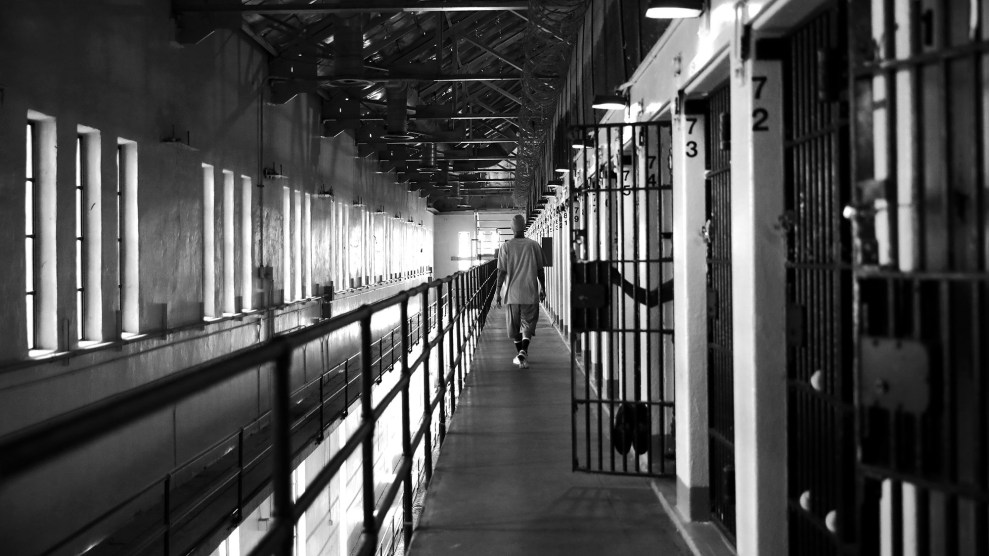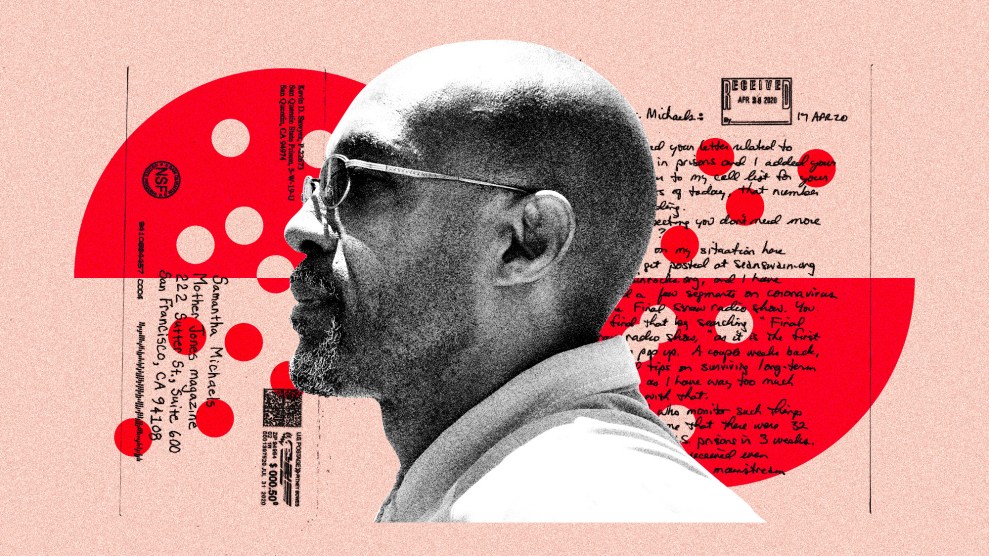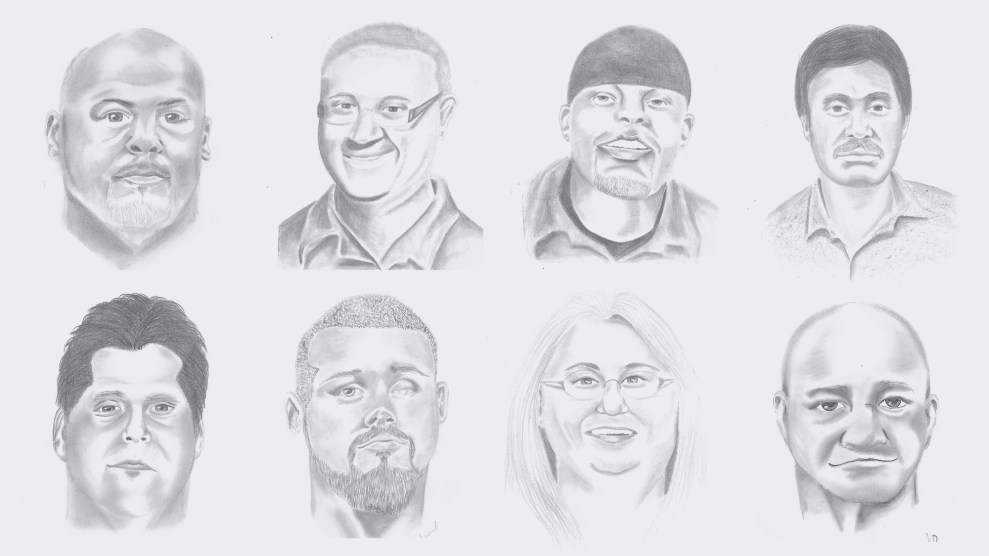
A compilation of portraits that EJ Joyner drew to remember incarcerated people who died from COVID-19Elisabeth "EJ" Joyner/Mourning Our Losses
Elisabeth “EJ” Joyner sat on the floor of her cell at Arrendale State Prison in Georgia, staring at the mugshot. It showed the unsmiling face of Carmelo Herrera, a 56-year-old incarcerated man in New Jersey who had recently died from COVID-19. Joyner adjusted her thick glasses to get a better look at his dark brown eyes, broad forehead, and salt-and-pepper mustache. She fashioned a makeshift desk by balancing a chess board on top of her bent knees and laid a piece of typing paper on top. Then, using a pencil and shading stumps she’d rolled herself, she began sketching his face.
Since last summer, Joyner, a 37-year-old portrait artist, has been working with a team of activists on a project called Mourning Our Losses to memorialize the thousands of incarcerated people who have died from COVID-19 nationwide. The coronavirus death rate has been three times higher in prisons than elsewhere in the United States. But prisons don’t often share much information about the people who die inside them, other than their names and crimes; sometimes, their family members or friends aren’t even notified. “A lot of people who have done a considerable amount of time end up being forgotten,” says Joyner, who was incarcerated less than a month after her 18th birthday and is serving a life sentence. Mourning Our Losses aims to fill the gap by recruiting activists around the country to research their lives and write their obituaries. So far, the project has published more than 200 memorials.
As a rule, the obituary writers avoid using dehumanizing words like “inmate” or “felon,” and they do not refer to the crimes that landed people in prison, hoping to avoid reducing them to their mistakes. Instead, the memorials answer questions about who the person loved, what they dreamed of accomplishing, the music they listened to, and what they did for fun. Families sometimes send in photos of the deceased from happier times.
When they can’t, that’s where Joyner comes in: She examines their mugshots and then creates slightly altered portraits that show each person with a softer expression. For Herrera’s image, she chose to focus on his face and to leave out the prison uniform he had been wearing. “Our goal is to honor them,” she says. “I refuse to allow these people to be remembered in their moments of misery.”
Before landing in prison as a teenager, Joyner grew up in Reidsville, a small city west of Savannah that’s known as a prison capital of Georgia and is home to the state’s first electric chair. Most of her neighbors, the ones who were lucky enough to find jobs, either worked on farms or in prisons. “It’s a very sad place,” she recalls. “If you’re there, you’re just kind of stuck there.”

Elisabeth “EJ” Joyner.
Courtesy EJ Joyner
Joyner’s mom was an artist, and as a kid Joyner loved drawing silly comics and graphic memoirs to process what was happening around her. After a court locked her up, she turned to art as a way to survive. In prison, she couldn’t afford to buy toothpaste, shampoo, or food at the commissary even though she worked 40 hours a week in the laundry room, because the state of Georgia doesn’t pay incarcerated people for their labor. So she started selling portraits to the women who were imprisoned with her—images of their kids and other family members they missed. Sometimes she crafted book covers for incarcerated writers, or sold funny Christmas cards, helping to cheer people up for the holidays. “She’s got a wry wit, and laughter is invaluable in prison,” says Page Dukes, a writer and activist at the Southern Center for Human Rights who was incarcerated with Joyner before being released four years ago. “She’d do anything for her friends.”
When the pandemic struck, Joyner had a job in the medical wing of Arrendale State Prison, the largest women’s prison in Georgia, scrubbing the floors and sanitizing the surfaces. As the threat of coronavirus rose, prison officials gave her extra disinfectants and encouraged her to double her cleaning efforts. Volunteers and professors who taught at the prison were no longer permitted inside. And women who started coughing and tested positive for the virus were sent to medical isolation, where, according to a report from the Southern Center for Human Rights, they struggled to find enough drinking water and lived in filthy cells. For the rest of the people in the building, it was impossible to social-distance, including at meal times.
So cases spread. It’s unclear how many women got sick at Arrendale State Prison, because testing was inconsistent and some people did not report their symptoms due to the threat of poor conditions in medical isolation. But at least 3,865 incarcerated people have tested positive in Georgia since the pandemic began. Nationally, nearly 400,000 incarcerated people have tested positive for COVID-19, according to a comprehensive data project by the Marshall Project. More than 2,700 of them have died, according to researchers at Mourning Our Losses, along with 240 correctional employees.
The memorial project came about during a Zoom video call late last spring. At the time, cities were ordering businesses to close and residents to shelter in place. But in prisons, people were still crammed in overcrowded housing units with few cleaning supplies. Kelsey Kauffman, a former correctional officer in Indiana known for founding a college program for imprisoned women, was worried about her incarcerated friends. So she assembled a group of activists and prison educators around the country to talk about ways to help.
The group had a common concern: From the outside, it was hard to know who was dying from the virus behind bars. Most corrections departments provided sparse details about the casualties—just a person’s age and crime, plus the correctional facility where they lived and the hospital where they died. Other departments stopped issuing press releases about these deaths altogether. “The fact that these people were dying and nobody knew who they were was really, really horrifying,” says Dukes, who joined the Zoom call.
While grieving has been hard for everyone separated from their families during the pandemic, people who lose loved ones in prison face unique challenges. Some corrections departments make no formal announcement after an incarcerated person’s death, and family members aren’t always promptly notified. “For people who have friends in prison who are dying, there’s no space for grief,” says Dukes. She spoke with one woman who didn’t learn her incarcerated ex-husband died from the virus until after he’d been on life support for months; the woman hadn’t even known he was hospitalized.
“We wanted to find out who they were and name them in a way that honored their life,” Dukes says, “and didn’t just describe them by what they had done to get them incarcerated.”
After the Zoom call, the activists launched a website to post eulogies of both incarcerated people and correctional officers. Kauffman partnered with student volunteers from Yale, her alma mater, to gather stories: They scoured news articles and social media and reached out to family and friends who could share memories. They also filed public records requests and mailed letters to other incarcerated people, asking them for information about their cellmates who died.
One of the memorials featured Darrell “Billy” Parks, who got infected in a New Jersey prison. Parks served in the military before his incarceration and “enjoyed fishing, watching car races, and going out dancing,” according to the memorial, which was written by Dukes and another volunteer, Eliza Kravitz. “You don’t know how much this means to me,” Parks’ sister, Trena Parks, wrote to Dukes after she read it. “I am still in a dark place and this brought light and joy to my inner soul.”
In October, a few months after Joyner joined the project, she had the chance to work on two portraits that she still regularly thinks about. There was Carmelo Herrera, the man in New Jersey. Next to Herrera’s image sat the portrait of Alexander “Reggie” Pettiway, 55, a correctional officer in North Carolina.
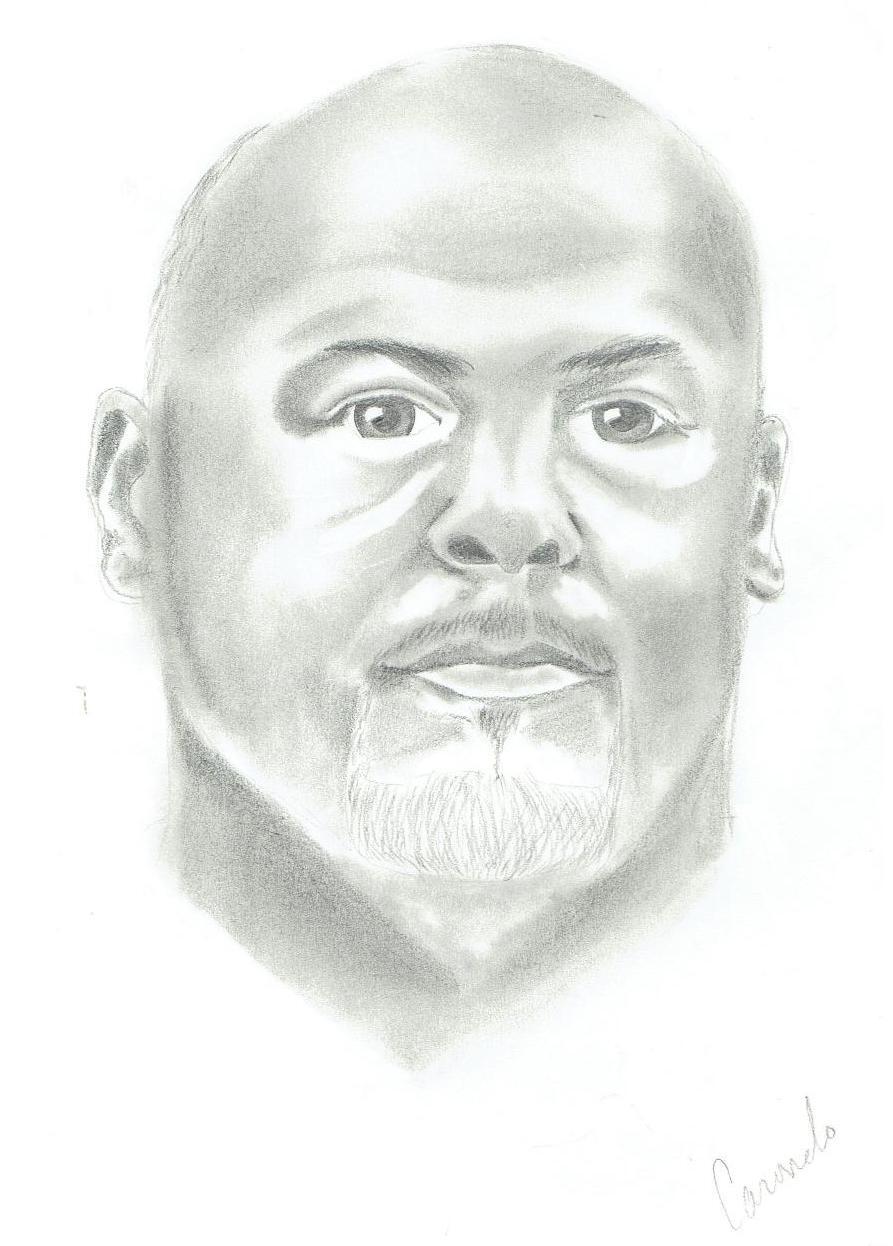
Carmelo Herrera
Herrera was incarcerated and Pettiway was a correctional officer, but their portraits revealed some commonalities. Both men were Black, just months apart in age, and both died in April 2020. “Looking at the photos side by side on my floor,” Joyner says, “it occurred to me that, when removed from their uniforms, who can tell who fit which uniform? They were both middle-aged African American men who looked like they probably went to the same grocery store.”
The project prompted Joyner, two decades into her incarceration, to consider the harmful divisions created by the criminal punishment system, and the importance of not judging people based on certain labels. “Just as much as society has ‘othered’ incarcerated people, we the incarcerated people have ‘othered’ officers and staff. We have immersed ourselves within a system that pits human against human. Carmelo and Alexander awakened in me the need to change my ways of thinking.”
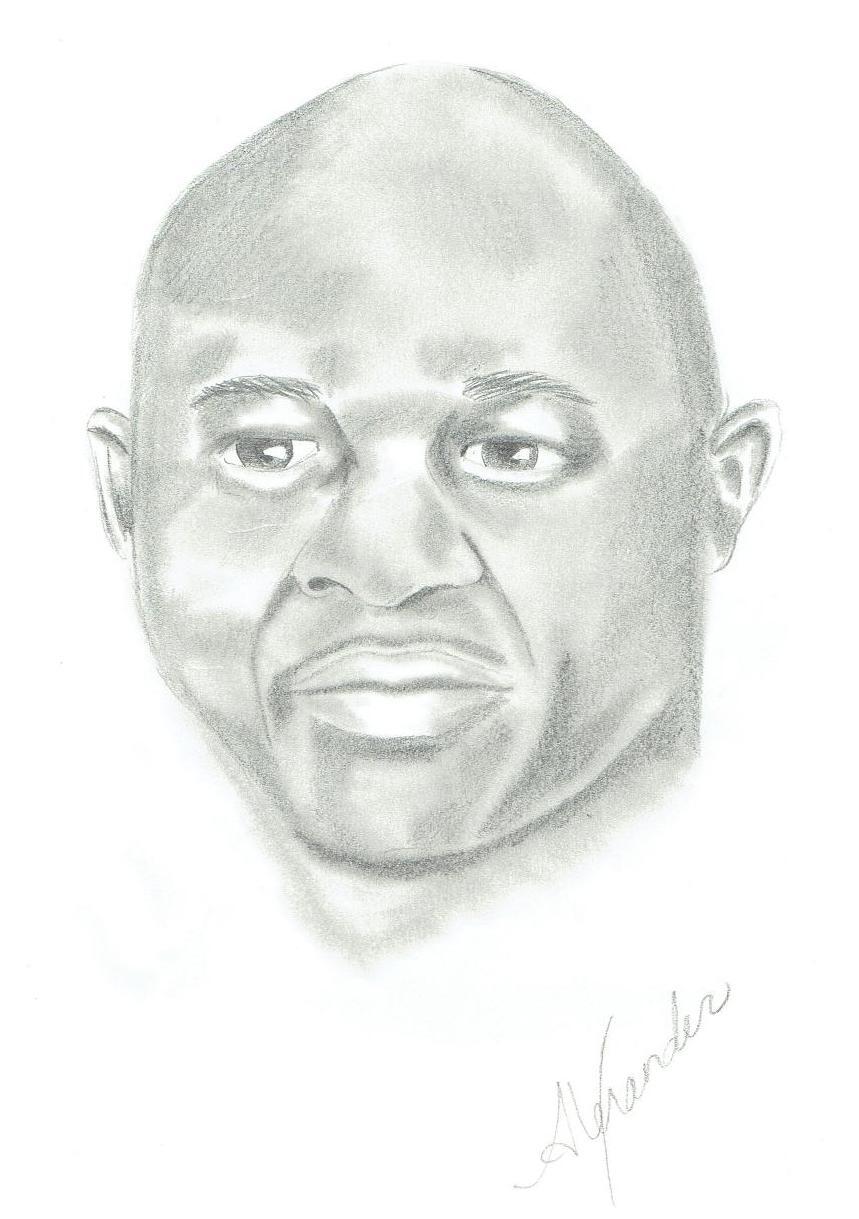
Alexander “Reggie” Pettiway
Arrendale State Prison recently resumed family visitation, with some restrictions. Children and elderly relatives aren’t allowed inside, and people must talk through Plexiglas, unable to touch each other even after so much time apart. Joyner’s neighbors tell her how awkward the visits are, but she can only envy them, because her family doesn’t come to see her in prison. For the first 15 years of her sentence, she didn’t even get letters from her relatives, who only came to see her once—back in 2005. After repeatedly reaching out to her mom, Joyner finally heard back last year, and the two sometimes send messages now. But she says another visit doesn’t seem likely. “For the majority of my sentence I have had no support at all,” she tells me. “I have been completely alone in this.”
“The people she’s drawing don’t have a lot of outside connections,” says Dukes, Joyner’s friend. “All we have is a mugshot. I wonder if she relates to these guys because she hasn’t had a lot of support on the inside from the outside either.”
To this day, the portrait Joyner drew of Carmelo Herrera, the incarcerated man in New Jersey, is her favorite. There’s something so open about his face, reminding her of a stranger she would like to stop and talk with. While the obituary for Alexander Pettiway, the correctional officer, is lengthy, filled with quotes from relatives and coworkers who recalled that he loved cooking and going to church and serving his community, Herrera’s obituary is short and does not include comments from his family. “We all called him Spanky,” someone who knew him in prison wrote for the memorial. “[He] was a good person…all he wanted was to finish his time and get back to his daughter.
In December, Joyner had her own brush with COVID-19 when her prison housing unit went into quarantine a second time after someone there developed symptoms. She lost her sense of smell, and it still hasn’t returned. By drawing these portraits, she says, at least she can honor some of the lives around her, the people who weren’t so lucky and didn’t survive the virus. But, she adds, if the roles were reversed, “I am still left wondering, who will draw me?”

